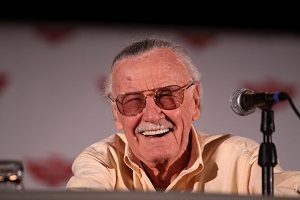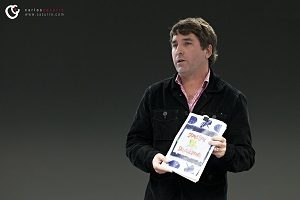
The story of the incredible man behind the world’s most popular superheroes ended on Monday, November 12, 2018, when the world-famous Stan Lee died at the age of 95. The cause of Lee’s death has yet to be released, but he was rushed to the emergency room earlier in the morning and had his death confirmed later in the afternoon.
Stan Lee was born Stanley Martin Lieber on December 28, 1922. He began working in the comic book business in 1939 and created many of the best known comic book heroes around today. Captain America, Iron Man, the X-Men, Black Panther, the Fantastic Four, Spider-Man, the Hulk, Thor and Doctor Strange all owe their creation to Lee. These characters would go on to become multi-media powerhouses, but when Lee began working in comic, he wrote under the pseudonym “Stan Lee” in order to preserve his actual name for more serious work. Comic work at the time was looked down upon. Lee noted that people would “avoid me like I had the plague.” Eventually, however, Marvel took flight and Lee changed his name legally to Stan Lee.
The heroes of Marvel made their name by being what no one believed readers wanted, human and flawed. D.C. comics, at the time, was focused on macho, perfect characters like Superman. Lee, however, gave Spider-Man dandruff and dating problems. Suddenly, superheroes were real in a way they never had been, and Marvel roared ahead almost overnight. People wanted more characters they could relate to with romantic issues, insecurities and irritating quirks. They wanted imperfect heroes, and Lee delivered.
In addition to the heroes that would go on to become the stars of the largest and most successful superhero film saga of all time, Lee gave readers insider updates on Marvel publications through editorials that he signed with his now-famous signature “Excelsior!” His enthusiasm was initially dismissed, but Marvel comics were steadily becoming more sophisticated and reaching wider and older audiences through a medium once dismissed as only being suitable for children. As such, Lee once again broke barriers by giving characters not only human flaws, but vices and serious problems such as Harry Osborn’s habit of popping pills and Tony Stark’s alcoholism. Rather than mindless entertainment, comics suddenly had deeper, more meaningful messages, and heroes were not just battling evil space aliens but the demons that readers themselves might face. Lee faced professional backlash over his decision, but the more serious comics were so popular that the Comics Code Authority actually relaxed its guidelines in response.
Lee eventually gave up the reigns at Marvel, but he remained a behemoth in the comic world and was all but deified by his fans. As such, when Marvel Studios took off with the speed of Tony Stark’s repulsors following the success of “Iron Man” in 2008, Lee had a cameo in every Marvel movie, and fans delighted in trying to figure out where he would pop up next.
Lee is survived by his daughter, J.C., and by the legions of heroes he brought to life. Lee once said, “I used to think what I did was not very important. People are building bridges and engaging in medical research, and here I was doing stories about fictional people who do extraordinary, crazy things and wear costumes. But I suppose I have come to realize that entertainment is not easily dismissed.” His heroes inspired millions and continue to remind people that “with great power, comes great responsibility.” Today, both caped heroes and pre-teen fans are mourning the loss of a giant as they say to Mr. Lee one last time, “Excelsior!”


